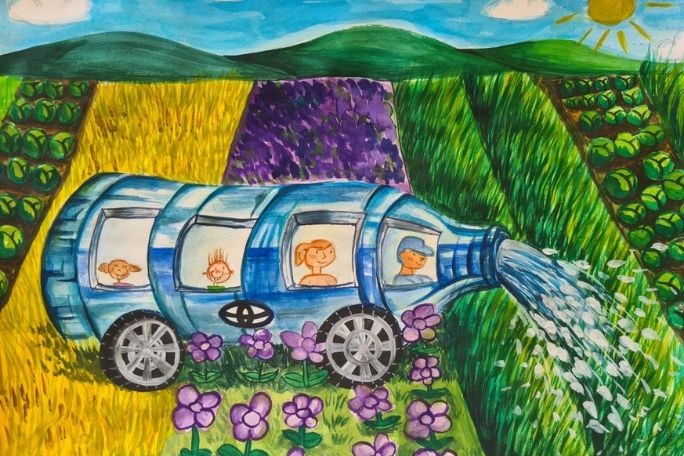Lesson summary
In this lesson, students design a dream car and create an artwork to represent their ideas that will be submitted to the Toyota Dream Car Art Contest). This contest encourages and inspires creative expression and imagination in students – some amazing ideas are born from dreams! Students investigate biomimicry as a design principle and design a dream car that incorporates features inspired by nature. They begin by examining what biomimicry is and work in groups to research examples of biomimicry. Students will then follow a design process to develop their own ideas for their car, beginning with brainstorming ideas and then creating a concept drawing of their car. Students then refine their ideas and transform their concept drawing into an artwork that can be submitted to the Toyota Dream Car Art Contest.
Learning intentions:
Students will...
- understand what biomimicry is and how nature can inspire design
- develop and practice art-making techniques
Success criteria:
Students can...
- define biomimicry in their own words
- apply principles of biomimicry to their own designs
- conduct research online
- work collaboratively
- engage in group and class discussion
- plan and create concept drawing and artworks
- use different drawing/painting techniques
Lesson guides and printables
Curriculum links
Select your curriculum from the options below.
Lesson details
Curriculum mapping
Australian curriculum content descriptions:
Years 7 & 8 Design and Technologies:
- Investigate the ways in which products, services and environments evolve locally, regionally and globally and how competing factors including social, ethical and sustainability considerations are prioritised in the development of technologies and designed solutions for preferred futures (ACTDEK029)
- Critique needs or opportunities for designing and investigate, analyse and select from a range of materials, components, tools, equipment and processes to develop design ideas (ACTDEP035)
- Generate, develop, test and communicate design ideas, plans and processes for various audiences using appropriate technical terms and technologies including graphical representation techniques (ACTDEP036)
Years 7 & 8 Visual Arts:
- Experiment with visual arts conventions and techniques, including exploration of techniques used by Aboriginal and Torres Strait Islander artists, to represent a theme, concept or idea in their artwork (ACAVAM118)
- Practise techniques and processes to enhance representation of ideas in their art-making (ACAVAM121)
Syllabus outcomes: T4.1.1, T4.1.2, T4.1.3, T4.2.1, T4.2.2, T4.4.1, T4.5.2, T4.6.2, VAS4.1, VAS4.3, VAS4.4.
General capabilities: Critical and creative thinking.
Cross-curriculum priority: Sustainability OI.8.
Relevant parts of Year 7 & 8 Design and Technologies achievement standards: Students create and adapt design ideas, make considered decisions and communicate to different audiences using appropriate technical terms and a range of technologies and graphical representation techniques.
Relevant parts of Year 7 and 8 Visual Arts achievement standards: Students plan their art making in response to exploration of techniques and processes used in their own and others’ artworks. They demonstrate use of visual conventions, techniques and processes to communicate meaning in their artworks.
Unit of work: Toyota Dream Car Contest.
Time required: 170 mins – artwork could be completed as homework.
Level of teacher scaffolding: Medium – facilitate class discussion, guide groups through activities and through the creation of artworks.
Resources required
- Paper measuring no larger than 400mm x 550 mm (15.7-21.7in.) or A3 in size
- Butcher’s paper and scrap paper for drafting
- Drawing materials, including but not limited to: coloured pencils, pens/markers, crayons, paints, watercolour paints, etc
- Student Worksheets – one copy per student
- Device capable of presenting a video to the class
- Nature Inspiration Images
- Early Flying Machines
- Previous Contest Winners
Skills
This lesson is designed to build students’ competencies in the following skills:
- Collaboration
- Communication
- Creativity
- Critical thinking
- Problem solving
Additional info
The Toyota Dream Car Art Contest usually commences late October to early November and concludes late to early March. Find up-to-date entry details, prizes and full terms and conditions here.


Welcome back!
Don't have an account yet?
Log in with:
Create your free Cool.org account.
Many of our resources are free, with an option to upgrade to Cool+ for premium content.
Already have an account?
Sign up with:
By signing up you accept Cool.org's Terms and Conditions(Opens in new tab) and Privacy Policy(Opens in new tab).